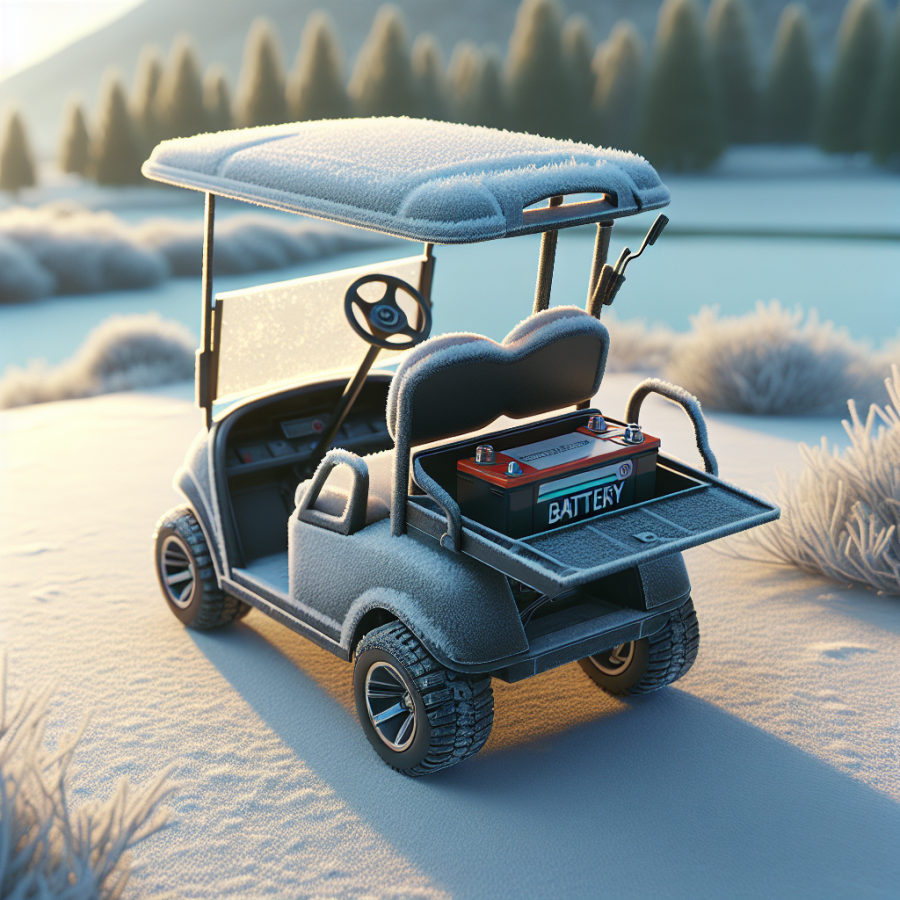Tips to Protect Your Golf Cart Batteries from Freezing Temperatures
Freezing temperatures can have a serious impact on the overall performance and lifespan of your golf cart batteries. The cold can slow down chemical reactions inside the battery, making it less efficient and even potentially causing damage. Therefore, proper care is crucial during cold seasons to protect and maintain such batteries.
Here are valuable tips on how to protect your golf cart batteries from freezing temperatures:
1. Maintain the Proper Charge Level: In freezing temperature, a fully discharged battery is more likely to freeze than one kept at a full charge. Therefore, ensure that your batteries are fully charged before expected cold temperatures.
2. Store Batteries Indoors: Whenever possible, consider storing your golf cart in a heated area, or at least bring your batteries indoors. If your batteries are not connected to anything and are stored in a safe, dry, and relatively warm area, they will be relatively safe from freezing.
3. Install Battery Blankets: If indoor storage isn't an option, consider investing in battery blankets or wraps. These are electrically powered insulating blankets that can keep your batteries warm in bitter cold.
4. Use a High-Quality Battery Maintainer: A high-quality battery maintainer can help keep batteries at optimal charges, which helps to prevent freezing. The maintainer can detect the level of charge in the battery and provide the necessary voltage to keep it sufficiently charged.
5. Regular and Thorough Inspections: Carry out routine inspections on your golf cart batteries before winter starts. Look for any visible signs of damage, corrosion, and leaks. If you find any batteries in poor condition, consider replacing them before winter.
6. Battery Equalization: Make sure that all of your batteries are equalized about once a month. Equalizing charge can reverse the build-up of chemical effects like stratification, the most common cause of battery failure during winters.
7. Using Battery Hydrometer: A battery hydrometer can be used to determine the state of capacity or the remaining power in your battery. A battery nearing or at 100% capacity is less likely to freeze.
8. Check the Water Level: Last, but not least, remember to check the water level in each battery cell. In the case of low water levels, add distilled water but avoid overfilling. The correct water level helps to prevent freezing and keeps the battery in good working condition.
With these tips, you ensure the longevity of your batteries and their performance during cold winter months.
Read also:
The Power of the Mind: Unravelling the Science behind Sports Psychology
Understanding the Impact of Cold Weather on the Performance of Golf Cart Batteries
Cold weather naturally leads to a decrease in the performance of golf cart batteries. Although these batteries are typically designed for consistent use in various climatic conditions, extreme temperatures can have a significant impact on their functionality.
Freezing temperatures, in particular, can have multiple impacts on golf cart batteries. Firstly, cold conditions tend to slow chemical reactions within the battery cells, leading to diminished battery power. The energy discharged by a battery is a by-product of these chemical reactions. Thus, when they are slowed down due to the low temperatures, the amount of energy that the battery can produce also reduces. This slows down the battery and decreases its overall performance.
Secondly, freezing temperatures can thicken the electrolyte solution within the battery. This causes a drop in the battery’s ability to produce voltage. As the electrolyte becomes sluggish, the internal resistance of the battery increases, leading to declined performance. The thickened electrolyte solution not only affects the battery’s internal dynamics, but it also restricts the battery’s charging ability, reducing the time taken for the battery to drain.
Another crucial impact of cold weather on golf cart batteries is the risk of freezing. In harsh freezing conditions, the water component of the battery’s electrolyte solution can freeze up, causing considerable damage. The electrolyte solution comprises of about 35% sulfuric acid and 65% water, and while the acid can withstand extremely low temperatures, the water component freezes at 32°F (0°C). If the battery is not sufficiently charged, this freezing point drops further, making the battery even more vulnerable to freezing in cold weather.
A frozen battery is not just incapable of operating properly, but it can also subject the battery to physical damage. As water freezes and turns into ice, it expands in volume, creating a pressure from within the battery. This can cause the battery case to crack open or lead to a warped and damaged internal structure, impairing the battery permanently.
Additionally, in severe cold weather, the rate of self-discharge can also increase within the batteries. Self-discharge is a phenomenon where batteries lose their charge while sitting idle due to internal chemical reactions. As the temperature drops, the rate of self-discharge can pick up, leading to a faster loss of charge in cold weather conditions.
Lastly, cold weather also affects the charging process. Golf cart batteries already take longer to charge in cold conditions due to increased internal resistance.




